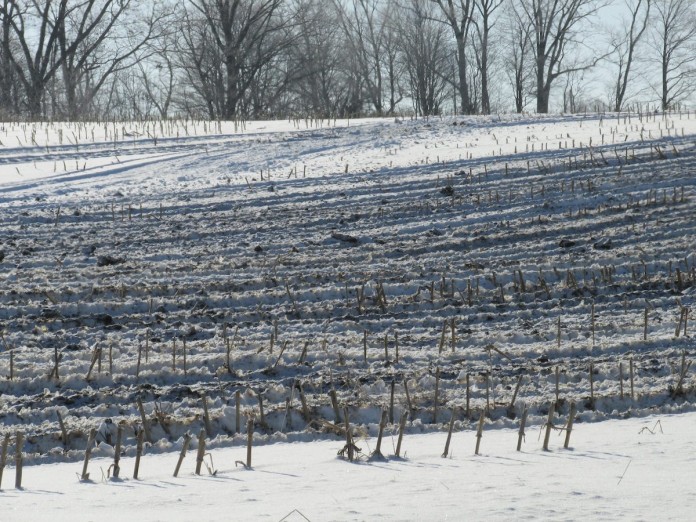Is there anything prettier than a snow-covered farm landscape in the winter? I love the snow sparkling on the trees and the clean, fresh beauty of a winter wonderland.
When I open the door or look out the window after a fresh snowfall, I can’t help but take a deep breath, marvel and the beauty and quiet, the close my eyes for just a moment to commit that scene to memory.
That wonder lasts all through my drive to and from work as I pass silent crop fields with cover crops under the cover of snow or hills dotted with cattle, sheep and horses. But the wonder comes to a screeching halt when I pass a once pristine, sparkling snow-covered field that is now covered with manure. Ugh.
Do it right
Now don’t get me wrong; I am a big advocate of using manure on your farm fields and a nutrient source — when properly applied using best management practices. Manure application is nature’s ultimate recycling project.
Proper manure application makes good sense for the environment and for your bottom line. But the key is that manure application has to be done correctly.
At Ashland Soil and Water Conservation District, we never recommend applying manure to frozen or snow-covered ground. Manure application to in the winter should not be a planned part of your operation.
With farmers increasingly under the spotlight when it comes to water quality and environmental stewardship, you owe it to yourself — and the rest of our industry — to take responsibility and plan ahead for proper manure application. Plus, proper manure application is the law, and there can be serious consequences if you choose to not follow those practices.
Emergencies happen
However, as fellow farmers and agriculturists, we also know that the reality is that sometimes “stuff” happens on the farm, and emergency application may be necessary to prevent storage overflow. If that happens, it’s important to remember to only spread enough manure to prevent manure overflow until soil conditions improve.
During am emergency winter application, it’s important to follow these guidelines:
- Manure must be injected or immediately incorporated and cannot exceed 5,000 gallons/acre.
- Land must have at least 90% surface residue; that most likely means cover crop ground or forage fields.
- Apply to least risky fields with the least slope. Fields with over a 6% slope (that’s a lot of northeast Ohio!) must be applied in alternating 60-200 feet strips on the contour.
- Manure cannot be applied on more than 20 contiguous acres.
- Application must be setback to a minimum of 200 feet from all surface water and 300 feet from all wells, springs and drinking water.
- Application rates cannot exceed those specified in Table 3, page 16 of the NRCS Conservation Standard Code 590, Nutrient Management.
While it’s important to follow these guidelines, they are not a “get out of jail free” card. Even if you are following these guidelines and your manure application enters waters of the state (ditches, creeks, streams, rivers, etc.), you are still ultimately responsible and may face financial fines. Also, remember to keep all manure application records for five years.
There are other good management practices to remember. Have your soil tested every three years — many SWCD offices offer soil testing. Test your manure for nutrient levels before application — many SWCD offices offer those, Keep these reminders in mind on your farm, and you’ll be well on your way to having a non-crappy winter.













